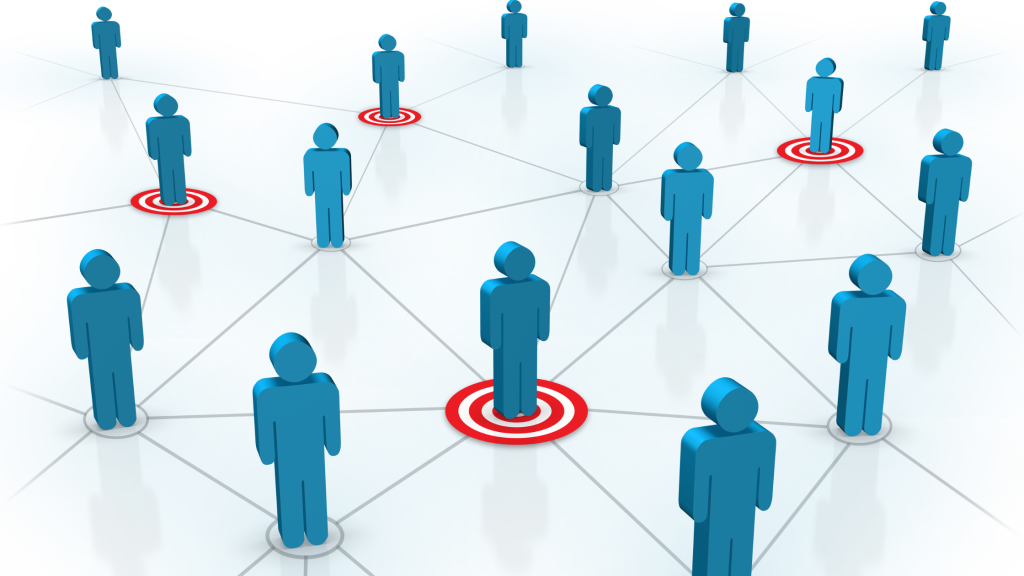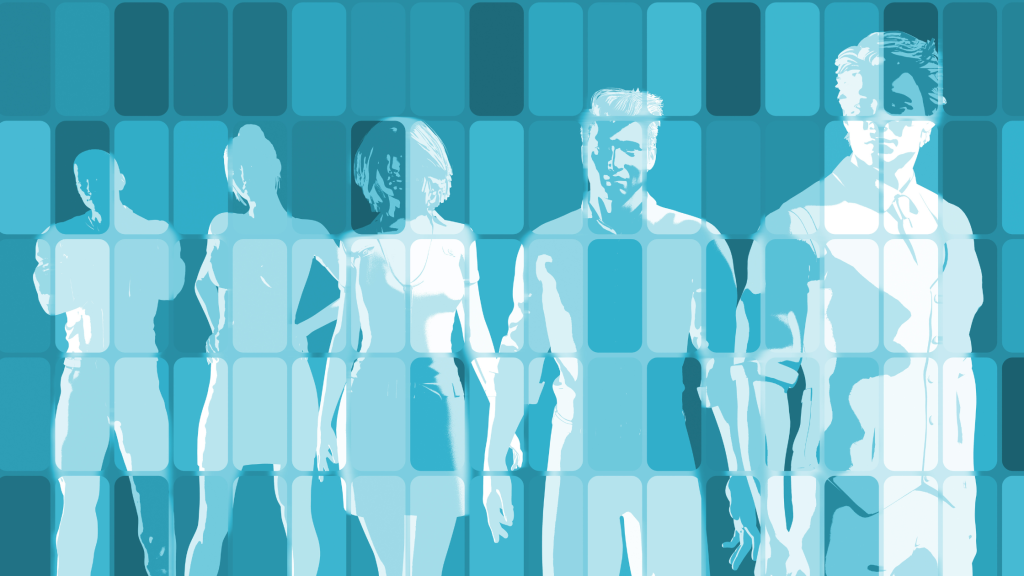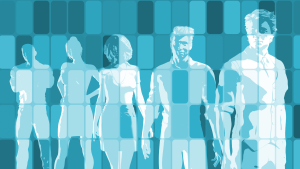Your personality (that blend of thoughts, feelings, and behaviors that makes you the unique individual you are) influences your natural communication style as well as the way you like others to communicate with you. To attract your ideal audience, you need to know what communication style will appeal to them.
The fascinating field of personality science provides some answers. Psychologists who study what makes us tick have found that people’s personalities greatly influence their preferences, spending habits, and consumption patterns. “Personality science offers the chance to empathize with individuals and engage them with the message, advertisement, or content in a way that is more likely to resonate with them,” behavioral scientists Christopher Graves and Sandra Matz wrote in an article for the Harvard Business Review.

Buyology and Cracking the BANKCODE
To succeed in marketing your product or service, you need to understand the personality of your target audience in a way that will allow you to connect with them effectively. But why people buy is even more important than how you sell. That’s why you also need to master “buyology,” the science of buying behavior that Cheri Tree, founder and CEO of Codebreaker Technologies, developed.
She reduced complex psychological assessments to a simple, fun quiz that reveals the unique combination of B.A.N.K. personality types — Blueprint, Action, Nurturing, and Knowledge — that shape your values and decision-making style. She calls this cracking the BANKCODE, and it provides brilliant insights into your own personality and values as well as those of existing and potential clients. When you understand all 4 types, you can connect with prospective clients faster and on a deeper level and hear lots more “yeses” when you tell them what you have to offer.
Cheri believes that 66% of customers are turned off by sales presentations because most salespeople rely solely on their own personality type to close the deal. “Only 18% of customers will buy from a salesperson who doesn’t match their personality type, whereas 82% will buy from someone who is a match,” she says. “If you’re good with people, you genuinely love them, you serve them, and you do what’s best for them, you’ll crush it in sales.”
We agree! That’s why, at IRYS, we base our value-driven marketing strategy on the B.A.N.K. system.
Your personal BANKCODE might look like BANK, KNAB, AKBN, or any other possible combination of these 4 letters. The first letter, with a strong influence from the second one, shows how you make decisions. The third explains how you react to stress. The fourth stands for the values you find least important.
Here are snapshots of the 4 types:
Blueprint
- Thinking: They are conservative planners and perfectionists who value proven methods.
- Feeling: They need a sense of order and consistency to feel secure.
- Behaving: They rely on due diligence, budgeting, and proceeding step by step toward a goal.
- Buying: They need a proven system for success and a way to minimize risk.
Action
- Thinking: They want to shake things up and break new ground.
- Feeling: They want to feel important, like getting the VIP treatment.
- Behaving: They take bold steps and are comfortable with risk.
- Buying: They want to get in on the next big thing and make up their minds quickly.
Nurturing
- Thinking: They want to contribute to something helpful and meaningful.
- Feeling: They need to belong to a caring community and build lasting relationships.
- Behaving: They network, promote good causes, and team up with others who share their vision.
- Buying: They need you to prove they’re buying the best possible product or service.
Knowledge
- Thinking: They value logic, learning, and self-mastery; they see the big picture.
- Feeling: They’re passionate about finding out the truth about anything and everything.
- Behaving: They ally themselves with other truth seekers and creative problem-solvers.
- Buying: They sell themselves on what you offer after doing independent research.
Armed with these insights into potential clients’ personalities and values, you can tailor your presentation to align with what engages them and avoid what turns them off. Best of all, you can be your authentic, honest self no matter who you’re selling to — you simply highlight the features of your product or service that are likely to elicit the most positive response from them.
Here’s an example of how this works in a real-life marketing situation. The characters’ names start with the letter that corresponds to their dominant personality type.

Using the BANKCODE to Market for a Nonprofit Client
You’re a nonprofit organization that helps military veterans connect with resources in their communities and other veterans who share their leisure interests is looking to raise funds. You craft a multi-channel campaign designed to engage potential donors through social media, storytelling, and personalized outreach. By understanding what drives different donors—whether it’s personal experience, a passion for storytelling, or a commitment to measurable impact—you can tailor your messaging to resonate deeply and inspire action.
Beth is the CEO of a financial services firm and a combat veteran who knows how difficult it can be to transition back to civilian life. She’s especially interested in fulfilling the unique needs of women warriors who are experiencing such challenges. She reads the LinkedIn article you created that shares details of the nonprofit’s women’s program that has helped dozens of female veterans benefit from a peer support group as well as opportunities to connect professionally and socially with women who share their concerns and interests. You send her a brochure packed with information about how helpful and cost-effective this program is and share testimonials from participants who say it has changed their lives for the better. You tell Beth you’ll follow up next week to answer any questions she may have about how her donation would be put to use.
Alan is a theatrical producer whose current project is a drama about the problems of several soldiers returning home after serving in a war zone. He sees your Instagram reel about how to “be a hero for our heroes,” especially one veteran, Joseph, who’s been in the news about his brave exploits in wartime as well as his tireless efforts for needy people in the community. Now Joseph needs help because a hurricane has left him without a home. You reach out to Alan about holding a big-ticket gala to publicize his play while raising funds to pay the first year’s rent on a nicely furnished apartment where Joseph could get his life back on track. You mention a celebrity who endorses the idea, invite Alan to have his cast members perform an excerpt from the play at the gala, and ask if he’d present a check for its proceeds to Joseph. Alan feels great about the event and his part in it and agrees immediately.
Nora is a retired high school teacher who, thanks to a lottery win, can afford to contribute generously to programs that benefit veterans like her brother, a Vietnam veteran who still struggles with PTSD although he’s received counseling for many years. Nora sees your Facebook campaign featuring a virtual event where veterans share their own stories of resilience and healing, showing the real impact of the nonprofit’s work. In another post, she is given the opportunity to share heartfelt memories of her brother’s service and the challenges he still faces today. You send her a direct message to tell her about the partnership your nonprofit has launched with the Veterans Administration to build a veterans’ center to serve the community where she and her brother live. You also share with her a powerful video with veterans talking about what this new center would mean for them and their families. You follow up with a personalized email sharing a touching success story of a veteran who found hope through the program, along with an easy way for Nora to contribute in honor of her brother.

Karl is a psychologist who’s doing research into the most effective ways to meet the needs of veterans for meaningful social interaction once they return home from serving abroad. While browsing LinkedIn, he comes across a data-driven article you published, detailing how a Texas-based nonprofit raised half a million dollars to fund veteran meetups, reducing social isolation for dozens of returning service members. You also share an interactive impact report on your website, highlighting success stories, testimonials, and statistics on how social programs have improved veterans’ mental health. Your targeted Facebook ad later appears in his feed, featuring a short video with veterans sharing their experiences of overcoming isolation through peer-driven events. Motivated by the research and real-life stories, Karl signs up for a live webinar hosted by your nonprofit, where experts discuss the psychology behind veteran reintegration and the tangible impact of these programs. A follow-up email campaign provides additional insights and offers an opportunity to support the cause through funding or collaboration. Karl calls two weeks later to say he’s learned everything he needs to know and wants to lend a hand.
This story is just one example of how understanding different personalities can shape more effective messaging and engagement. Whether it’s through targeted social campaigns, personalized outreach, or compelling storytelling, tailoring communication to resonate with different personality types leads to stronger connections and greater impact.
At IRYS, we’re passionate about the power of personality science in business and beyond. We’ve seen firsthand how it improves communication across all types of relationships—not just in marketing and sales but also in everyday interactions. You may even find yourself using BANKCODE insights for better first dates, smoother holiday gatherings, and, of course, more meaningful and profitable conversations with clients.






